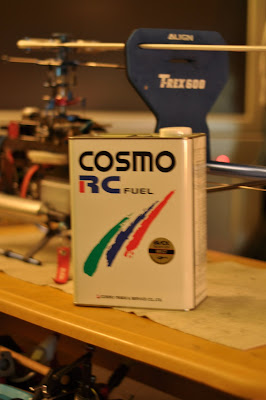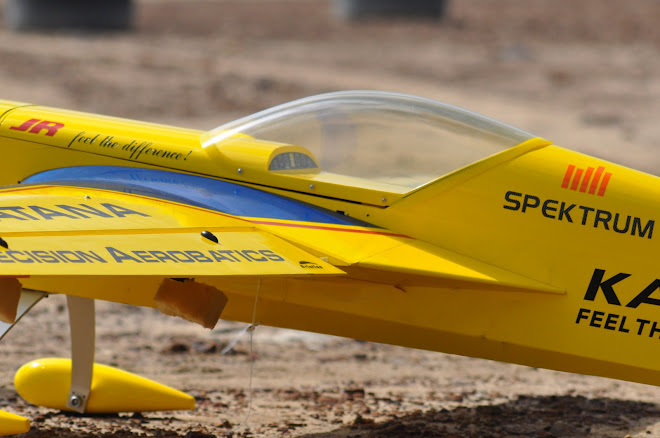


Published on:30.01.2008
■ Serial No.:BS-30001
■ Products Name:「Black Special WC」
■ Products Logo Mark:
■ Purpose:Fuel for Radio Control Model Engine (For Helicopter)
■ 「COSMO RC FUEL」Products Line-up
「COSMO RC FUEL」has full line-up of special fuel for each models ( R/C Airplane,
R/C Helicopter, R/C Car, R/C Boat). The difference of each fuel is based on the
percentage of common ingredients( See following ingredients chart) and the ingredients
information, handling procedure and remarks are common for all of fuels. To know the
detail information about the percentage of ingredients of each fuel, please see
“Specification”.
・Single or Mixed: Mixed
・Chemical name: Mixed products of nitro methane, lubricants and additives mainly
based on methanol
Ingredients
Methanol
(Methyl alcohol)
Nitro methane
Lubricants
(PAG)
Additives
(Anti-Rust)
Content 43% 30% 26% 1%
Chemical CH3OH CH3NO2 n/a n/a
Cas No. 67-56-1 75-52-5 9003-11-6 125643-61-0
Proper Shipping Name Flammable Liquid n.o.s.
UN No. 1993
UN Class 3.2/Ⅱ
HS Code 38.24.90-000.4
Identification of material
・Manufacturer:: Cosmo Trade & Service Co., Ltd.
・Address: 2-5-8, Higashi-Shinagawa, Shinagawa-ku, Tokyo Japan
・Contact: Sales Department, Environmental Development Division
・Tel/Fax: 81-3-5462-2841/81-3-5462-2808
・Emergency Tel: 81-3-5462-2841
・Open: Monday – Friday (09:00 – 17:30)
Material Safety Data Sheet
・Name of classification:
inflammable liquid, acute toxicity material, self-reactivity material
・Hazardous: The Fire Services Act prescribes Hazardous 4 class 1st oil group class II
It is volatility inflammable liquid, which is easy to inflame and make
explosive mixed gas with air. It has the possibility to explode by mixing of
Alkali, heating in sealed condition and shock.
・Harmful: Inhalation causes headaches, vomiting, dizziness and etc. Expose in vapor
for long time causes disorder of optic nerve, nerve center, respiratory
organ, kidney and liver. Repeated contact of liquid to skin causes stimulus,
dryness, scaly dermatitis and crack dermatitis.
・Contact eye: Wash eye with large amounts of water for more than 15 minutes and get
medical attention immediately.
・Contact skin: Remove contaminated cloth and shoes and wash the burned area with
large amounts of water or soap water. If pain is not relieved, get medical
attention.
・Inhalation: Immediately remove to fresh air place, keep warm and quiet and
getmedical attention.
・Ingestion: Drink large amounts of water to vomit and get medical attention. But if
patient lose the conscious, don’t take anything from mouth.
・Fire Fighting Procedure:
1. Shut off the combustion source to the origin of fire.
2. For early fire, use dry chemical, carbon dioxide, dried sand and etc.
3. For large-scale fire, use alcohol form. Stick water may expand the fire.
4. For surrounding fire, move the container to safety place. If it is impossible
to move out, cool down with sprinkle water.
5. When fire extinguishing, extinguish from the windward with protector.
6. Keep people out surrounding. Extinguisher: Dry chemical, carbon dioxide,
dried sand, alcohol foam.
Classification of Hazard
Emergency and first aid procedures
Measure for fire
Remove the ignition source surrounding.
・Large quantity: Keep people out surrounding by roping. Put protector and never work
in leeward. After stop the leak with sand and lead it to safety place, collect in
empty container as much liquid as possible and prevent runoff into the river
and drain.
・Small quantity: Absorb the leak into sand or waste cloth, collect into empty container
and wipe a stain with waste cloth completely
・ Handling:
1. Don’t bring the fire close. It is easy to inflame and its vapor makes
explosive mixed gas with air. Don’t evaporate.
2. The vapor from glow fuel is heaver than air and easy to stay. Keep
attention to ventilation and fire.
3. Keep in normal temperature and keep attention for mixing of water and
alien substance. Don’t mix with other petroleum products and chemicals.
4. It possibly explodes by mixing of alkali, heating in sealed condition and
shock. Keep attention for mixing of alkali and heating and keep out the
shock.
5. Wear electric conductive cloth and shoes.
6. Keep attention not to contact the liquid to skin and use protection globe.
In the case of possibly contacting to the eye, use protection glass.
7. In the case of possibly inhalation of vapor, use respirator.
8. Use pomp on taking out from container. Don’t suck up with mouth using
straw. Ingestion causes death.
9. Keep the container sealed.
10. After handling, wash hands and eyes enough. Remove contaminated
cloth.
11. When handling large amounts of fuel more than specified quantity,
handle in regal factory, warehouse and agency.
・Storage: 1. Avoid direct ray of the sun and keep in well-ventilated cool place.
2. Storage with indication of hazardous.
3. Avoid heat, spark, flame and static electricity.
4.Electrical used in warehouse must be explosion-resistance and
instruments must be ground connected.
5.Avoid the contact and storage the same place with halogens, alkalis, strong
Measure for leak
Remarks of handling and storage
acids, oxidizable substances.
・Handling of container:
1. Avoid the pressure on container. Pressure causes the crack.
2. Don’t weld, heat, drill or cut the container. Residues possibly ignite with
explosion.
3. Make full-use of contents of can and dispose after taking off the cap.
Disposal must be done according to the proper regulation.
・Control density:
n/a as glow fuel for RC engine
・Permissible density:
n/a as glow fuel for RC engine
・Control density:
200ppm ( Bulletin of Ministry of Labor 79th 1988.9.1.)
・Permissible density:
200ppm (260mg/m3) (Japan Society for Occupational Health, 1992)
200ppm (262mg/m3) TLV-TWA (ACGIH, 1991-92)
250ppm (328mg/m3) TLV-STEL
・Facilities: Install ventilator in high vapor density.
・Protector: Use air mask, respirator, protection glass, rubber globe, rubber
boots or rubber apron as occasion.
・Appearance: Volatile flammable liquid with light yellow color and irritant odor.
・Vapor pressure: 47-57 kPa (55℃)
・Density: 0.88-0.95g/cm3 (15℃)
・First distillation point: over 63℃ (760mmHg)
・Solubility: Soluble in alcohols, insoluble in mineral oil and water.
・Vapor Density: 1.1- 2.1 ( estimated)
・Flash point: 11℃ (TAG sealing method)
・Ignition point: over 400℃ (estimated)
・Explosion limit: Highest limit null, Lowest limit 6vol% (estimated)
Protection of exposure
Physical/ Chemical Character
Hazardous information ( Safety・Reactivity)
・Flammability: Flammable ( Volatile flammable liquid)
・Ignitability: Possibly explosion by mixing alkalis, heating in sealed condition and
shock.
・Oxidizability: Oxidizable
・Self-Reactivity・Explosiveness: Possibly explosion by heating and shock
・Stability: Stable
・Reactivity: Avoid the contact with alkali and strong acid.
・Others: Distillation possibly causes explosion.
Null as glow fuel for RC engines
・Stimulant: Weak stimulus for the skin, but long-time contact or repeated contact
causes dryness, scaly dermatitis and crack dermatitis.High-density vapor
stimulate eye, throat and respiratory organs, but it is weak and temporally.
・Acute toxicity:Acute toxicity by expose of methanol causes the same situation as over
drinking alcohol, except for disorder of optic nerve and loss of
eyesight.Lethal dose is less than 1g/kg by oral ingestion or 100-250ml by
drinking.Methanol effects on mainly nerves, especially optic nerve and
retina. The first sign is the dim sight, light oversensitive, which causes
headaches,dizziness, tinnitus, nausea, vomiting, stomachache, fatigue and
etc.Eyesight disorder sometime is temporary, but returns and advances to
the loss of eyesight. Heavy exposure causes loss consciousness, death
through lethargic sleep. It is difficult to excrete, which causes 2 or 4 days
lethargic sleep.Vapor exposure of methanol causes death within 1-2 hours on
50,000ppm density.
・Chronic toxicity: Repeated exposure of methanol vapor more than 200ppm causes
disorder of optic nerve or polyneuritis. The case of optic nerve is possibly loss
eyesight by disorder of visual field, headache, loss of central visual. The case
of central nerve is headache, malicious intent, dizziness, and loss
conscious.Methanol poisoning causes metabolic acidosis and heavy poisoning
causes disorder of the kidney and the liver.If the vapor density is less than
200ppm,there are rare poisoning. Stay in 1000ppm in 1 hour causes
headache eye stimulus and fatigue.
Harmful information( The case to the human, epidemiological information)
Influence on environment Null as glow fuel for RC engine)
・Decomposability: Good organic decomposability
・Accumulatability: No report
・Toxicity for fish: Toxic for aquatic life. Fatal dose is 17,000mg/L for 24 hours. Toxic
limit density Shudomonus fungus 66,000mg/L
・Others: Toxicity for alga 530mg/L, Toxicity for green alga 8,000mg/L
1.Company must dispose by themselves, or depute the disposal to the waste
disposal dealers approved by prefectural governor or to the local public
entity.
2.Don’t dispose in sea, liver, lake, surround of them and drainage way.
3.In the case of incineration of small amount, absorb in sawdust or waste
cloth and incinerate by open type incinerator.
4.In the case of no incineration, take active waste disposal.
5.Empty can must be used its contents completely and dispose after take off
the cap.
6.Comply with the proper regulations.
1.Use proper container and proper cardboard.
2.Check the leak from the container, load without turn over, dropping and
damage and prevent the load collapse.
3.Don’t contact to fire nor add the shock and rubbing.
4.In the case of delivery of over amount by truck, put the mark of
“Hazardous” in front of car and the back of car and fit the extinguish
equipment.
5.Don’t deliver with hazardous products and high-pressure gas of the first
group ( oxidisable solid: materials for gunpowder, etc) and the 6th group
( oxidisable liquid: concentrated nitric acid, etc).Comply with the proper
regulations.
The Fire Services Act: Hazardous products ( 4 class 1st oil group)
The Labor Safety and Sanitary Act: Hazardous products ( inflammable
products)
The poisonous Control Act: Poisonous products ( acute toxicity products)
The Ships Safety Act: Inflammable liquids
The Aviation Act: Inflammable liquid
Precautions in disposal
Precautions in delivery
Applicable regulations
The Harbor Control Act: Inflammable liquids
The Road Transport Vehicles Act: Hazardous products, explosive liquid
The Sea Pollution Prevention Act: Oil exhaust control
The Sewerage Act: Mineral oil exhaust control
The Water Pollution Prevention Act: Oil exhaust control
The Waste Disposal and Cleaning Act: Industrial waste control ( prohibition
of spread and effluence)
*This Material Safety Data Sheet is offered to the dealers of hazardous
chemical products for treating safely as reference information.
*We do our best to write this information, but it doesn’t mean the guarantee
of the complement and accuracy of information. Every chemical products
has unknown toxicity and keep attention to handling.
*Dealers must handle properly on their own responsibility referring these
information.This Data Sheet is not the guarantee.
*The contents written in this sheet possibly will be changed according to the
new knowledge.
Company:Cosmo Trade & Service Co., Ltd.
Address:2-5-8, Higashi-Shinagawa, Shinagawa-ku, Tokyo, Japan
Contact:Sales II Department, Environmental Development Division
Tel/Fax:81-3-5462-2841/81-3-5462-2808
E-mail:cosmo-rc@cosmo-oil.co.jp
Emergency call:81-3-5462-2841
Others
Contact(Manufacturer)

My Fleet Trex 600NSP Arrived 3rd February 09
Maiden On 4th February 09
Bitching On 6th February 09
Crash Flame Out Auto Rotation (Hard Landing Only)
Crash Assesment
1.Broken landing Skid Twice
2.Bend Skid Pipe
3.Slight Crack on tail Blade
4.Bent Muffler
5. Bent Main Shaft
6. Bent Flybar Rod
7.Hitting Head (seven Stitches)
8.Self awareness (Throttle Hold whenever Start engine)
9.Do not start engine on the bench
10.It is not TOY its a serious hobby

















No comments:
Post a Comment